♫ “Kaltura – I just met an Integrated Media Storage and Streaming Solution Named – Kaltura” ♫
This article is a very quick introduction to what you can do with Kaltura. Details about HOW to do it will follow over the next few weeks, including two shiny new workshops (details below).
What is Kaltura?
At its heart, Kaltura is a media server and streaming service – from within UTSOnline or Canvas, anyone in the uni (staff and students) can upload videos they’ve created, and embed them into their subjects. When students encounter it in their subject, they see an embedded player, which feels like an integrated part of the subject. It looks a little something like this:
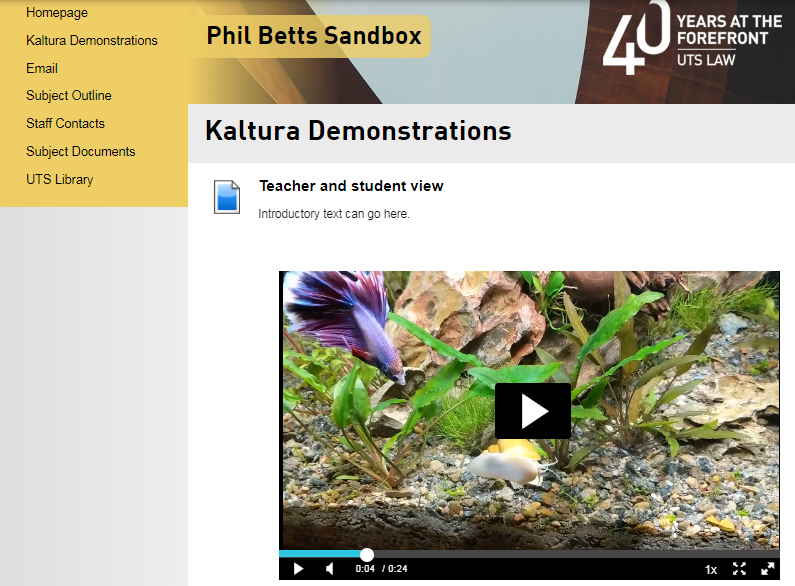
No matter what file size you upload to it, Kaltura will determine the screen size and connection speed, and deliver the best video quality. It’s got the all-important full screen mode and playback speed options – critical for aiding comprehension and revision, particularly amongst international students. So far, so YouTube.
However, Kaltura has a few of what we call “Advanced Learning Features” that make it a potentially powerful tool for your learning design.
Advanced Learning Features
Video Quizzing
Perhaps the most interesting feature is the ability to take any video you’ve uploaded and overlay an interactive video quiz. At present you can ask multiple choice questions, true or false, or insert pauses for reflection. Where previously you might have added an awkward 5 or 10 second break built into the video, now Kaltura can add it for you, so that students can move through it at their own pace. Amanda White in Accounting is already using this for pre-class exercises and linking it to Blackboard’s Adaptive Release feature – at other universities, in addition to content-based questions we’ve seen format specific uses such as visual observation and method-based questions, qualitative evaluation questions, and predictive questions (Rubenstein, 2017).
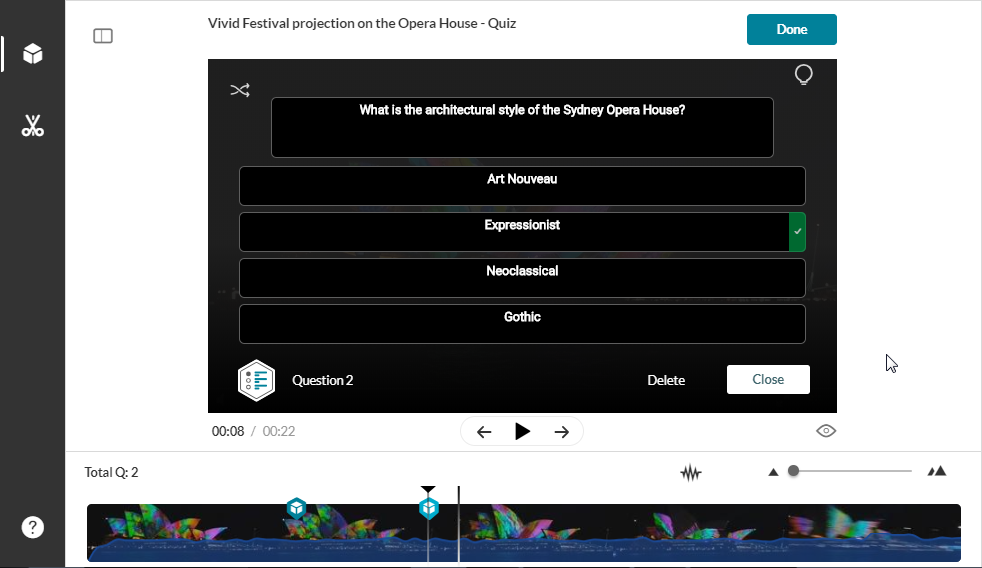
Advanced Analytics
YouTube gives you an overall viewer count since the video was uploaded. Kaltura gives you almost everything. You can see who’s watched your videos, how many times, how long for etc. This has the potential to provide some really valuable feedback and insight into your teaching content and viewer behaviours (eg. difficult topics, points where students are dropping out etc.). It’s a promising area (with some interesting practical and ethical considerations), and we’re looking forward to working with the university’s Centre for Connected Intelligence (CIC) to unlock some of the potential of this data.
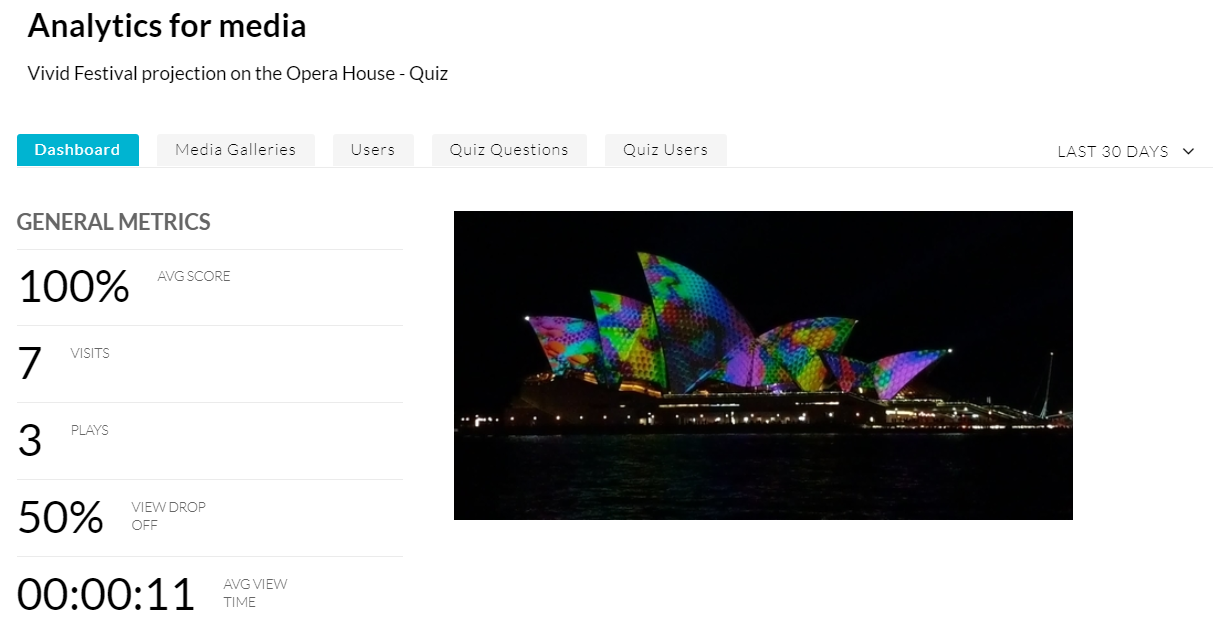
Shared Resources
Kaltura comes with a university-wide repository, with videos all staff can use in their subjects. At present, you can find a large number of the library’s student-focused resources in it, with topics like “Writing a well-connected paragraph” and “Why do we reference?” In the future, this has the potential to become a sort of university commons, with opportunities to share content for transdisciplinary purposes.
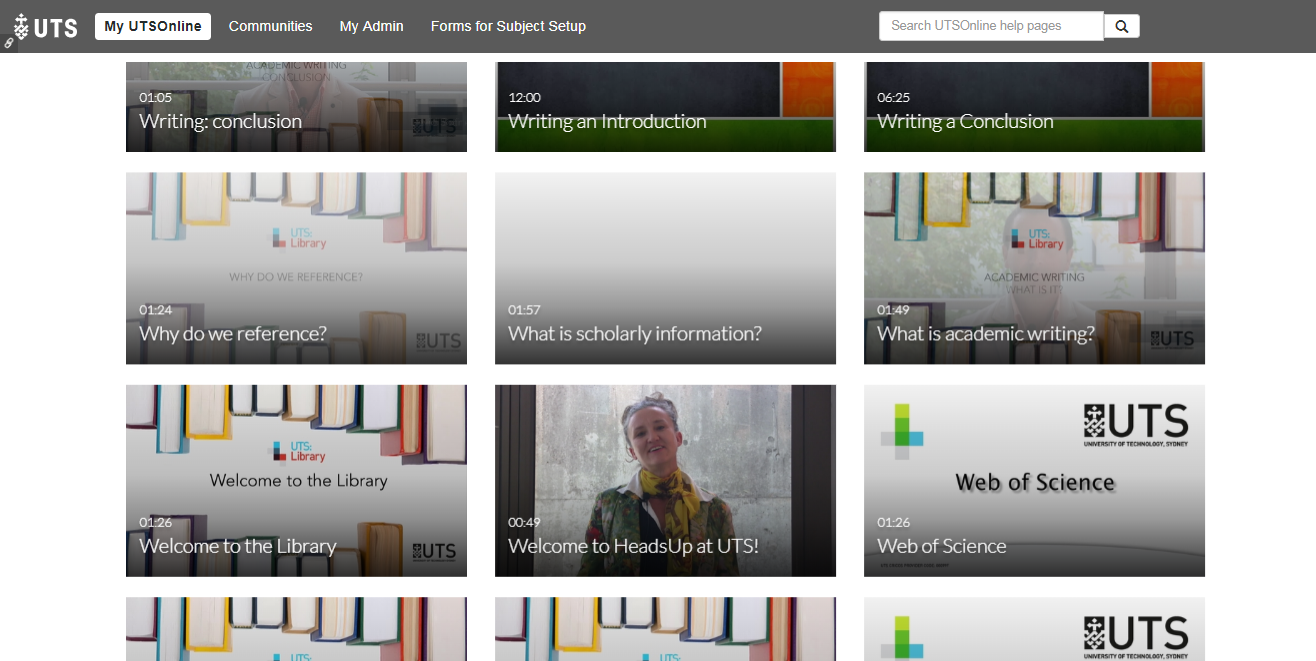
In addition to university-level sharing, Kaltura also has the ability to share rights on a one-to-one basis, which makes it possible to share amongst co-instructors or small teams, whether it be someone from your team managing your subject setup, or a colleague who would like to show your video in a completely different topic. YouTube is very much tied down to individuals, whereas Kaltura offers a bit more flexibility, all managed in one place.
More advantages
In addition to these advanced learning features, there are a few other advantages Kaltura has over the competition:
No ads, no suggested ‘related videos’, no privacy concerns
Rather than hosting your video with a private company overseas *Cooughgle*, Kaltura provides us with our own private servers in Australia. It’s locked down to our LMS system and UTS sites, so there are no worries about unauthorized use. When you’re embedding videos within your subjects, students have no need to leave the LMS, and especially no need to fall down a YouTube hole*.
Replace videos
The unwritten law of video production is that, several weeks after it’s gone live, you will notice a sanity-destroying error that somehow crept in. With YouTube, you’d have to abandon ship, upload a new video file, get a new link and swap out all references to it. You’d lose all viewing metrics, and it’s a hassle if it’s displayed in more than one place. With Kaltura you can swap out the videos, but all references and analytics will remain in place.
“Kaltura sounds great, Phil, where can I find out more about it?”
I’m glad you asked. Since it’s early days, part of the answer is ‘watch this space’. There are some rudimentary instructions up on UTSOnline Help, but we’re creating a new series of guides and training resources, while still discovering the innovations that are now possible. As we develop our resources, we’re especially interested in hearing about how you use these features in new and innovative ways.
If you’d like to get up and running now, however, we’re here to help! You can lodge a Service Connect ticket, and I can come out and work through the setup with you. You can also use the LX.Lab’s drop-in service, 11:00 am – 2:00 pm Mon-Fri.
We’ve also got two upcoming workshops:
Understanding Kaltura: for Learning Designers & Support Staff
12:00 pm – 1:00 pm, Thu 05/07/2018
4:00 pm – 5:00 pm, Thu 12/07/2018
Hope to hear from you!
***
*…and end up watching 4 hours worth of videos about aquarium aquascaping and sinking $400 into a new aquarium setup. They can do that outside of study time:
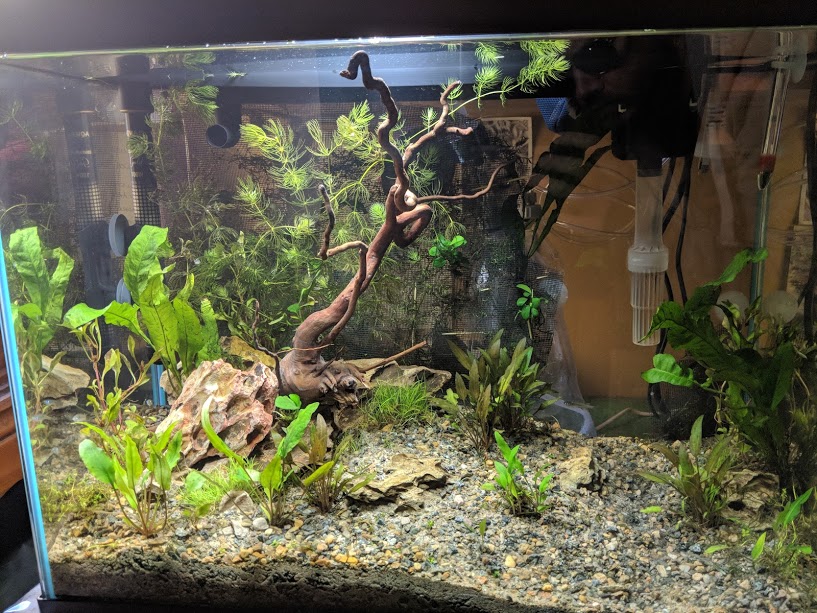

Hi Phil, would this technology be ready to pilot for Spring orientation? Law have an event Thurs evening 19th July that we may be looking at this for. Is this more a video/youtube like tool like you’ve outlined? Or is there any video conferencing capability?
Hi Crystal, Kaltura is available now, however, it’s more of a video/YouTube tool.
There is however a separate tool for video conferencing, called Zoom, which is also available now.
You can find an introduction (see if it fits your needs):
https://lx-dev.uts.edu.au/blog/2018/02/12/zoom/
Online guides at:
https://help.online.uts.edu.au/information-for-staff/communicating-and-collaborating/zoom-in-utsonline/
And there’s actually an event coming up on July 13 with Christine Giles from Law where you can see the tool in action, though this may be a bit late for you:
https://lx-dev.uts.edu.au/events/zoom-future-law-academic/
Jason Harris from Law also has experience with Zoom, so it might be worthwhile having a chat with him about it.
If you need any more help just lodge a Service Connect ticket, or come to our drop-in sessions Mon-Fri, 11am-2pm, CB06.04.020
Nice aquascape Phil. Any pointers?
I’ve followed this setup, and it seems to be working pretty well: http://www.aquariumlife.com.au/showthread.php/30650-Cheap-Sand-based-CO2-Generating-Sub
Other than that, this time I’ve been rocking consistent lighting, and putting plants into the substrate with tweezers, which has made things nicer.
Also, YouTube. Just 1000 YouTubes. Turns out the internet can be pretty good for learning things. Who knew?! Lifelong learning!